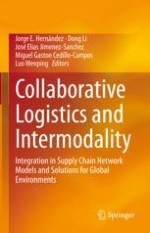This book presents new approaches to logistics solutions in global environments, with a special focus on collaborative logistics and intermodality. Contributions in this book are linked to two major initiatives in global logistics - H2020 MSCA-RISE-EU project EC-Asia Research Network on Integration of Global and Local Agri-Food Supply Chains Towards Sustainable Food Security (GOLF), and the International Conference on Logistics & Supply Chain (CiLOG). Topics covered in this book are: global logistics environments in manufacturing industries, key logistic decision-making parameters, global logistics management and its impact on container logistics processes, logistic market clusters and many more.
